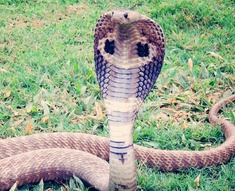
Animals of the Week #4: India
Last updated: Friday August 27th, 2021
Report this blog
Some More Information
The idea of this series is that each week, I will post a blog that educates you about six different animals, one mammal, bird, reptile, amphibian, fish, and invertebrate. This is inspired by my fascination with the zoological world, so I hope to bring the wonders of animals to you. This is the fourth edition, and this time the animals are native to India, so I do hope you enjoy it. Let's get started!
Mammal: Ganges River Dolphin

Dolphins are famous and distinguished marine mammals, known by practically all, but what about a river dolphin? It's incredibly hard to deny how unique river dolphins are, but it's also hard to deny that they're in hot water (no pun intended). Officially discovered in 1801, Ganges river dolphins historically inhabited the Ganges-Brahmaputra-Meghna and Karnaphuli-Sangu river systems in Nepal, India, and Bangladesh, but the former range of this wondrous creature has been diminished, and this species of river dolphin is now extinct from a large part of its early distribution. Strictly native to freshwater, the dolphins are essentially blind and produce ultrasonic sounds that bounce off fish and other prey to hunt. This enables them to "picture and imagine in their mind." Ganges river dolphins are typically found alone or in small groups, a mother and her calf traveling together in most cases. Calves are a chocolate-brown hue at birth and develop smooth, hairless grayish-brownish skin in adulthood; females are larger than males and give birth to one single calf every 2-3 years. Sadly, though, these river dolphins, crucial to the balance of the river ecosystem, are dying out, due to inadvertently catching dolphins in fishing nets, hunting for their meat and oil, and industrial, agricultural, and human pollution. But these magnificent dolphins were declared India's National Aquatic Animal for a reason, and we should fight for protection and conservation of this species.
Bird: Bar-headed Goose
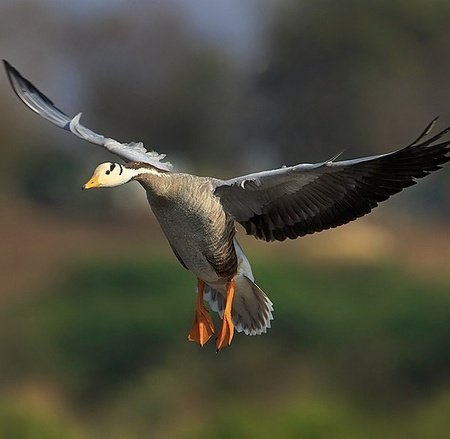
Why a goose? They're nothing special ... or are they? The bar-headed goose is one of the highest-flying birds in the world, recorded flying higher than the peak of Mount Everest - over 29,000 feet (8,839 meters) above sea level. This occurs during the species' annual migration, in which they travel directly above the Himalayan mountain range on their route between nesting grounds and winter quarters in India. Breeding takes place in summer, in central Asia (mainly Mongolia and China), while winters are spent in northern India (and Myanmar), and preferred habitats during breeding are elevated wetlands, winter habitats being lowland swamps, lakes, and rivers. The geese are primarily herbivorous, feeding on several plant parts such as grasses, roots, and stems, also feasting on tubers, grains, and seaweed occasionally. Nesting happens in dense colonies, with females laying 4-6 eggs, which hatch after approximately a month; chicks depart from their nests after about 53 days.
But, you may be wondering, what exactly makes these geese such high flyers? Zoologists have uncovered a special type of hemoglobin, a blood protein, that quickly absorbs oxygen at very high altitudes. In addition, their capillaries, small blood vessels, extend particularly deeply into their muscles, therefore bettering their transfer of oxygen to muscle fibers. At first glance ... not a unique bird, but when we delve deeper into the solid biological facts about this interesting species, we learn that there's much more than what it seems on the outside.
Reptile: King Cobra
The king cobra, one might say, is an iconic reptilian of Asia, widely famed for its ability to basically "stand up" and outstretch its intimidating hood, as shown below. It's no lie that they are one of the most venomous snakes on Earth, but fortunately they are quite shy. King cobras are chiefly native to the rainforests and plains of India, Southeast Asia, and southern China, coloration varying from the countless regions they inhabit. These cobras prefer a wide variety of habitats such as forests, mangrove swamps, elevated grasslands, bamboo thickets, and rivers too. Also, rather perilously to some, king cobras reach eighteen feet in length, which makes them the longest of all venomous snakes. Despite shyness, the hazards of their venom are severe. The amount of neurotoxin delivered in just a bite is enough to kill twenty people, or an elephant, and their dangerous venom causes respiratory arrest and cardiac failure. Mainly snakes but also small mammals, eggs, and lizards comprise their preferred diet, and, peculiarly enough, they are the only snake species on the planet to build a nest for their eggs, which they guard with ferocity. The IUCN (which you should know by now as the International Union for Conservation of Nature) lists king cobras as vulnerable to extinction, unfortunately, because of various human threats including deforestation, capture for skin, food, and medicine, the international pet trade, and persecution from fearful humans. Vietnam has labeled them a protected species, while conservancies work to better understand the species - more efforts are being made by the Indian government, implanting microchips in captive cobras to identify any newly captivated cobras. Like many, many species, hopefully the king cobra will live on.
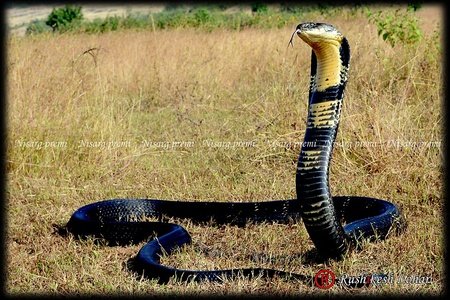
Fish: Bombay Duck
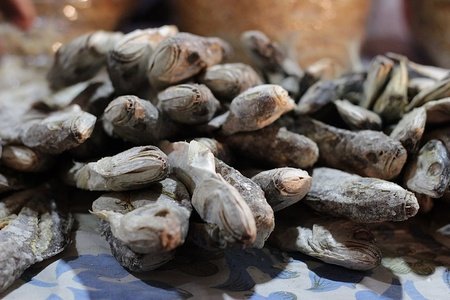
Do you know what's sad? The only photos of the Bombay duck online are those of fish that have been caught and killed for consumption. Despite restrictions set to decrease the continuous fishing of this creature, it is still increasingly devoured by South Asian populations such as Bengalis, Gujaratis, and Bangladeshis. Also called the bummalo, bombil, and boomla, the Bombay duck is a species of lizardfish that can reach a maximum of 16 inches (40 cm) at adulthood, but are usually around 9.8 inches (25 cm) in length. Native to the aquatic tropical areas of the Indo-Pacific, the Bombay duck is sometimes deemed the "strange fish" due to its inconsistent distribution.
The species has been typically caught in coastal Maharashtra, Gujarat, as a significant item of the annual catch, but is also caught, admittedly in smaller numbers, in the Bay of Bengal and the South China Sea. What about the ever-so-bizarre name? Clearly, this is not a duck. Well, the etymology of this ... cough, duck, cough ... is shrouded in uncertainty; one popular false etymology states that the pungent smell of the dried fish when carried by the mail train (the Bombay Daak), in the days of British Raj, led to their current name. However, it has been affirmed that as early as 1815 the phrase was used, 37 years before the first railroad in Bombay (now Mumbai) was built, making this implausible. Local Bangladeshi tales also claim that the term was first conceived by Robert Clive, associating the fish's pungent smell with the newspaper and mail that would come from Bombay; however, the true origin of the Bombay duck's strange name is entirely unknown.
Invertebrate: Southern Birdwing
A butterfly? That's the best I could come up with? Well, yes, but you can't deny how astonishingly vibrant and flamboyant the southern birdwing is. Describing them would be incredibly intricate, so I'll leave it to your eyes to marvel at their wondrous splendor, unquestionable grandeur. Southern birdwings are native to the Western Ghats and part of the Eastern Ghats mountain ranges. The butterfly is quite common in the southern and central Western Ghats, distributed across the Indian states of Karnataka and Kerala, and is less common in southern Maharashtra and northern Goa. Contrary to the implications of its rather restricted range, the birdwing is not thought to be threatened, though the IUCN still recommends studies to conducted. The butterfly tolerates many diverse habitats including coastal lowland evergreen forests, deciduous forests, agrarian fields, and dry scrub. Its only food source is nectar, and it feeds on many diverse plants, including those from the Lantana genus. As of our meager knowledge, this species is not endangered in any way (and like always, hopefully it shall remain so), but we can only await the future fate of the unequivocally striking southern birdwing butterfly.
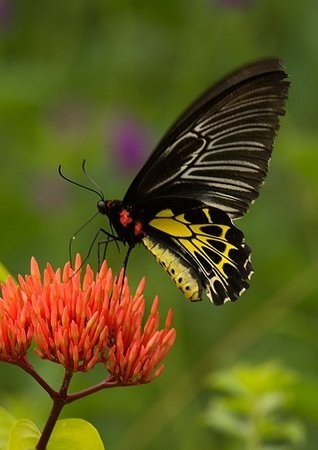
Conclusion
You may have noticed that I skipped the amphibian section. First of all, the amphibian I found (Himalayan newt) had very little information online, and second, it would honestly be quite tedious to educate you about them. So I skipped the amphibian section, as usually there are not too many interesting amphibians as other animal classes. The second thing you may have noticed is that it has been nearly a month since my last AOTW blog, and that is because I have been legitimately busy. I apologize again. Now, I like this idea of thematic AOTW blogs, from a certain category or area, so I will continue it. You may be able to guess what the next themed blog will be about (hint: it was inspired by a popular blogger). As always, tell me which animals you have heard or not heard of before (I shamefully admit that I did not know about the final two creatures). So, any guesses on the next thematic animal blog? Tell me, and be sure to inform me on your thoughts of this blog. See you next time, JetPunkers!

And I forgot to mention, give me some suggestions for thematic AOTW blogs!
And also, Fun Fact: When the British Ruled India, they had a growing problem of the amount of Cobras in the area, so they decided to give people money for each dead cobra they turn in to them. At first, the plan was working brilliantly and the cobra population was dwindling very quickly and becoming less of a threat, until some smart people realized that you could just breed the snakes and turn more in for a bigger amount of money. When the British found out about this, they cancelled the entire scheme so all of the people let all of their Cobras go, and in the end, the Cobra population actually nearly doubled in India.
Second, I'm glad that the UK stopped the whole cobra scheme. I'm all about conservation and I wouldn't want cobras to die out like some more unfortunate species (thylacines, dodo birds, passenger pigeons ... very saddening)
And the Brazilian ones will need at least two parts lol*I can already hear Aficionado and TheNatureThread writing their paragraphs on the comments...*
Don't get overpatriotic, MGI can hear it too
I don’t have guilty of be born in the best country of the world! Excepting by political stuff...I've only heard of the Dolphin and Cobra (very shameful) but the animals are very interesting! Sad that so many are endangered, especially the Bombay Duck.
the next one is going to be brazil rightAnd yes, it will be Brazil. Why would I deny the Blog Emperor?
And can you collab with me if this happen... wait, just one animal per part?
I feel like a real idiot for my lack of knowledge about Indian animals besides those that live in the Himilayas -v-
And don't worry, I learned a lot from my research for this blog. I'm really learning a lot about animals lately (more than I already knew)
If you decide to make a part 2 of Indian animals, I can help you.
And to TheNatureThread, Aficionado, and MG17 alike, no, I won't make multiple versions of the same themed animal blog, since I don't want one country/area to get more attention than others (even if they really do deserve it).
For example, Tuvaluan wildlife should get just as much recognition as Brazilian wildlifeand tuvalu